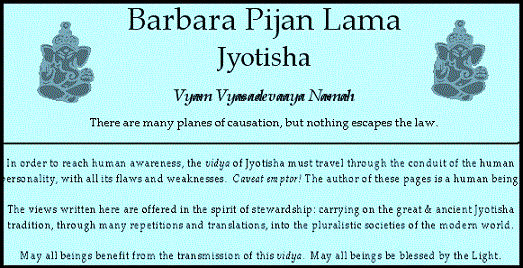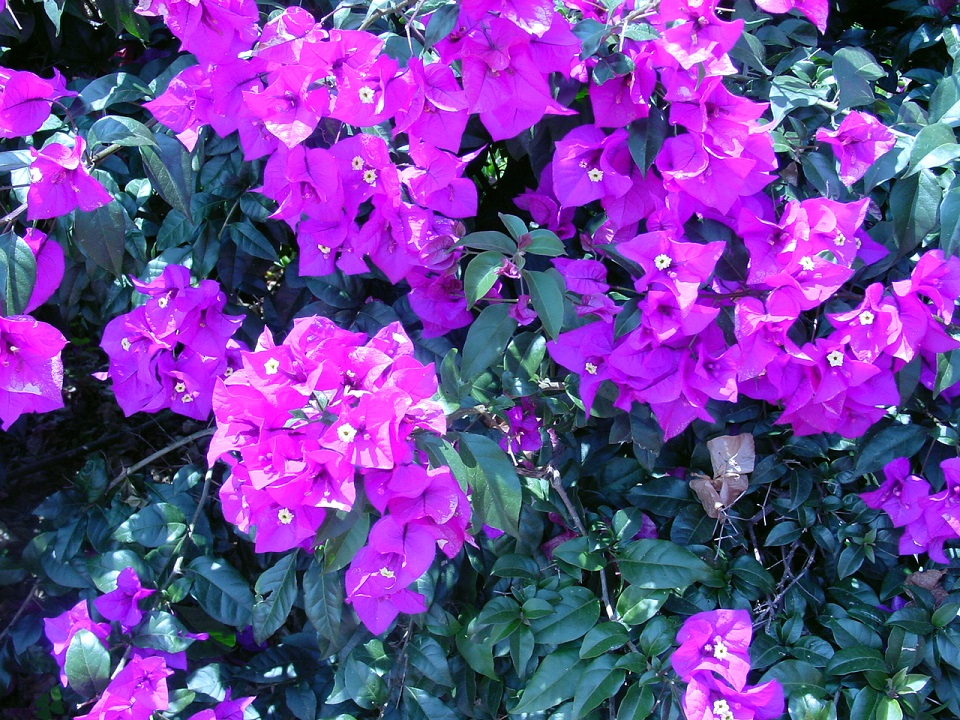

Vimshottari Dasha - Rashi - Gochara - Bhava - Graha - Ratna - Nakshatra - Amsha - Karaka - Varga - Bala

Mercurius
Georg Pencz, Germany * 1528-1529; collection of the Victoria and Albert Museum



OM pram preem proum sah shanaischaraya namah
OM bram breem broum sah budhaya namah
yuti
Mercury the Merchant
Hermes - Thoth
Merx - Mark - Merch
sMargara - sMarjali
Marketa - Margareta
Enki - Nabu - Neba
Sabgu - Borsippa
Odin Woden = Wednesday
conjunct
Saturan - Sauran - Sauri
Kevan - Kaiwan
Satu = the seventh one
steady instruction
patient explanation
reiteration
platitudes
resistance against signaling
materialistic sibling
pragmatic coupling
limited interaction
disciplined messaging
constrained communication
regulated conversations
indictment

Das Schweriner Schloss in Mecklenburg-Vorpommern im Nordosten von Deutschland
Budha-yuti-Shani
[Budha-Mesha] yuti [Shani-Mesha] [nīcha]
-
POTUS-pair-45 fashion 1970- Melanija Knavs Trump + [Shani-yuti-Surya] (9)
[Budha-Urisha] yuti [Shani-Urisha]
-
POTUS-33 Trial and Hope 1884-1972 Harry Truman (11) [Budha-11 Parivartamsha Shukra-12]
-
Silly Love Songs 1942- Beatle Paul McCartney (6, working classes) proletarian speech, songs
[Budha-Mithuna] yuti [Shani-Mithuna]
-
My Inventions 1856-1943 Nikola Tesla + [Surya-yuti-Shukra] (3)
[Budha-Karkata] yuti [Shani-Karkata]
-
France-Emperor 1769-1821 Wars Napoleon Bonaparte [Pushya, 3, planning]
-
POTUS-42 My Life 1946- Bill Clinton (11) legalistic speech
[Budha-Simha] yuti [Shani-Simha]
-
Secret Doctrine 1831-1891 Theosophy Helena Hahn Blavatsky + [Kuja-yuti-Rahu] (8)
-
VPOTUS-pair Music Censorship 1948- Tipper Gore [Surya-yuti-Budha] + [Surya yuti Shani] [1, physical appearance]
[Budha-Kanya] [uchcha] [svakshetra]
[mūlatrikoṇa if within 16-20 deg] yuti Shani-Kanya
-
Superman 1952-2004 tetraplegia Christopher Reeve [Hasta-Budha-yuti-Surya-Aryaman] [ashtangata-harana] + [Hasta-Budha-yuti-Shani-Hasta] [12, imagination, isolation, hospitalization]
-
POTUS-pair-11 Polk Place 1803-1891 Sarah Childress Polk + [Aryaman-Budha-yuti-Shani-Aryaman] [Hasta-Kuja-yuti-Guru-Hasta[ 3, newspapers, editorial writing, letters of correspondence, campaign management]
-
Fashion economics 1981- real-estate Ivanka Trump Kushner [8, secrets, non-disclosure]
[Budha-Tula] yuti Shani-Tula [uchcha]
-
POTUS-pair-34 Military Families 1896-1979 Mamie Doud Eisenhower [Visaka-Budha-yuti-Shani-Visaka-uchcha] [3, planning, management]
-
UK-PM Path to Power 1925-2013 Margaret Thatcher [12, clandestine ops]
-
Calif-Gov-pair 1955- broadcast journalist Maria O. Shriver + [nīcha] Surya (1)
-
POTUS-29 Teapot Dome 1865-1923 Warren G. Harding [Visaka-Kuja-yuti-Budha-Visaka] + [Svati-Surya-yuti-Shani-Svati-uchcha] [Budha-4 parivartamsha Shukra-3-nīcha]
[Budha in Vṛścika] yuti Shani in Vṛścika
-
Ethica ordine geometrico 1632-1677 Baruch Spinoza [Budha-yuti-Surya] * Budha-yuti-Shani (10)
-
Puttarpathy 1926-2011 Sathya Sai Baba [Surya-yuti-Budha] + [Shani-yuti-Shukra] [1, personality, physical appearance, vitality]
[Budha-Dhanus] yuti [Shani-Dhanus]
-
USA-Treasury 1755-1804 Federalist Papers Alexander Hamilton + [Kuja-yuti-Chandra] (5)
-
Tantra 1931-1990 professor Osho Rajneesh + [Chandra-yuti-Shukra] + Mangala (1)
[Budha-Makara-Draco] yuti [Shani-Makara-Draco]
-
Aquero 1844-1879 St. Bernadette of Lourdes + Shukra (1)
-
Standard Oil 1874-1960 philanthropy John D. Rockefeller + [Surya-yuti-Shukra] (5)
[Budha-Kumbha ] yuti [Shani-Kumbha]
-
Earth Changes 1877-1945 Edgar Cayce + Shukra-yuti-Rahu (2)
-
UK Earl of Wessex 1964- Edward Mountbatten-Windsor + [Surya-yuti-Kuja] (6)
[Budha-Meena] [nīcha] yuti [Shani-Meena]
-
Theory of Relativity 1879-1955 Physics Albert Einstein [nīcha-bhanga] + [Surya-yuti-Shukra-uchcha] (10)

- prefers to follow strict protocols of permitted speech
- legalistic speech
- proletarian speech
- explainer of rules
- systematic instruction
- dictates requirements
- orderly information
- obligatory declarations
- limited interaction
- regulatory duties constrain communication skills
- lawful planning
- slow scheduling
- talks like the older people
- conventional conversations
- message of institutional order
- government mouthpiece
- mature management
- makes necessary announcements
- cautious gestures
- restrained signaling
- chatty elders
- materialistic sibling
- pragmatically cooperative coupling [Budha]
- disciplined messaging
- constrained communication
- regulated conversations
- documents the class hierarchies
- definer of strict regulations
- may be intimidated or oppressed by public-speaking duties
- mental depression
- may apply a platitude, slogan, or other legitimating phrase at the end of their statements
In 6, often comunicates in a style that can be perceived as cranky or cantakerous.
The COMBINED continuous Mahadasha endures for 36 years (19 + 17).
if Shani-yuti-Budha are placed productively, then there is much opportunity to grow a substantial career during these 36 years.
- especially in any of their four svabhava = the upachaya-sthāna 3-6-10-11
- especially if these two contiguous mahadasha span the midlife years
in 3 - publications, management, documents, reports, instructions, plans, meetings, media-messaging, communications
-
POTUS-pair-11 Polk Place 1803-1891 Sarah Childress Polk + [Aryaman-Budha-yuti-Shani-Aryaman] [Hasta-Kuja-yuti-Guru-Hasta] [3, newspapers, editorial writing, letters of correspondence, campaign management]
-
My Inventions 1856-1943 Nikola Tesla + [Surya-yuti-Shukra] Shani-then-Budha Mahadasha span = age 36-until-72. Much accomplished in documentation, explanation, computation, detailed instruction.
-
POTUS-29 Teapot Dome 1865-1923 Warren G. Harding [Visaka-Kuja-yuti-Budha-Visaka] + [Svati-Surya-yuti-Shani-Svati-uchcha] [Budha-4 parivartamsha Shukra-3-nīcha] Hardings newspaper business controlled the flow of information in his region. In his era, news publishers wrote much of their own material, or accepted stories written by vested interests to promote a questionable truth. WGH died prematurely and did experienced neither Budha nor Shani Mahadasha. His POTUS term was considered a failure due to his participation in political corruption [3, collaborators]
-
POTUS-pair-34 Military Families 1896-1979 Mamie Doud Eisenhower [Visaka-Budha-yuti-Shani-Visaka-uchcha] [3, planning, management] MDE famed for her explicit interpretation of her husband [Visaka] as her lifetime singular project-management target . Age 12-until-48, much accomplished as a busy organizer of military-families.
in 6
-
UK Earl of Wessex 1964- Edward Mountbatten-Windsor + [Surya-yuti-Kuja] (6) - spanning age 46-82, potentially very productive, albeit in environments of the satkona
in 10
-
Ethica ordine geometrico 1632-1677 Baruch Spinoza [Budha-yuti-Surya] * Budha-yuti-Shani (10) Due to a short lifetime and Chandra-Bharani , spinoza had neither a Shani Mahadasha nor a Budha Mahadasha
-
Theory of Relativity 1879-1955 Physics Albert Einstein [nīcha-bhanga] Budha + [Surya-yuti-Shukra-uchcha] (10)
in 11
-
POTUS-33 Trial and Hope 1884-1972 Harry Truman (11) ++ [Budha-11 Parivartamsha Shukra-12] - the combined mahadasha began age 20, and spanned the midlife years 1914 until 1950, covering both World Wars. Lacking a college education but loyal to the political machine (Shani-11) Truman's political leadership career was grounded in his military identity (Mangala-1)
-
POTUS-42 My Life 1946- Bill Clinton (11) - spanning age 57-93, not quite as impactful as Truman, but still indicating a long sustained period of social participation work (11)
in 12
-
Superman 1952-2004 tetraplegia Christopher Reeve [Hasta-Budha-yuti-Surya-Aryaman] [ashtangata-harana] + [Hasta-Budha-yuti-Shani-Hasta] [12, imagination, isolation, hospitalization]
Professor Budha and Professor Shani are neutrally friendly.
Chattering Kumara sees sober, serious Shani as a sama-graha * neutral.
Shani likes Budha. Shani sees Budha as a mitru-graha close friend.
Shani-yuti-Budha is potentially a very steady combination that is capable of enduring much reiteration. This pair is often found in patient, mature explainers whose Akashic memory patterning [Shani] includes a duty to describe rules and systems .
The drawback to this combination, whether by yuti or by drishti, = the gestural, spoken and written expression tends to be somewhat taciturn. There is a self-restraining quality to the verbal expression. The strongest case of rigidly standardized modes of speech along repressed verbal specificity-and-creativity occurs with Shani's 3rd-drishti upon Budha, which inculcates a mental depression leading to fear of speaking clearly. Also some exacerbation of the sobriety and conservatism in speech, leading to vacuous words, when Budha is weakened in Meena or Budha-yuti-Ketu.
Plain talk
-
POTUS-29 Teapot Dome 1865-1923 Warren G. Harding in political campaigning, Harding was well regarded for his ability to speak in plain talk to the common folk, especially on topics of money. His straightforward talk about money in terms of household or small business budget made Harding sound like a man of the people rather than an out-of-touch Washington capitalist.
Resistance [Shani] to providing meaningful information [Budha].
One may be so concerned with propriety and neutrality [Shani] that minimal meaning is transmitted [Budha]. Verbal, written, gestured individuality and uniqueness are dampened by Shani's preference for uniformity and exception-less-ness. Vocabulary may be so non-specific and so generalized that even though the sentences may be grammatically correct, the information is blunted in meaning.
Splendid attribute for government officials. Tendency to over-use stock phrases and old stories; reliance on verbal techniques to avoid confrontation such as using a rhetorical question to answer an inquiry. Avoidance of controversial topics, astyle preference for the lingo of the working classes, hesitation in speech, and bureau-speak are some of the typical consequences.
Shani-yuti-Budha is often found in the nativities of textbook writers, elementary school teachers and university science instructors. It is a notable feature of incarnations which are purposed to explain rule-ordered systems.
-
Ethica ordine geometrico 1632-1677 Baruch Spinoza + Surya (10)
-
Secret Doctrine 1831-1891 Theosophy Helena Hahn Blavatsky + [Kuja-yuti-Rahu]
-
My Inventions 1856-1943 Nikola Tesla + [Surya-yuti-Shukra] (3)
-
Earth Changes 1877-1945 Edgar Cayce + Shukra-yuti-Rahu
-
Theory of Relativity 1879-1955 Physics Albert Einstein + [Surya-yuti-Shukra-uchcha] (10)
-
Tantra 1931-1990 professor Osho Rajneesh + [Chandra-yuti-Shukra] + Mangala
Shani-yuti-Budha is effective in matters of governance when Shani is strong
-
UK-PM Path to Power 1925-2013 Margaret Thatcher [uchcha- Shani-12 rules 3-instructions]. MRT's greatest political success arose from making strident proclamations about UK's territorial privileges in a distant land (Falklands, 12). However, Ketu-3 suggests that the proclamation had a shaky basis.
The speech style [Budha] is typically simple in structure. One gains a reputation for honesty and avoidance of scandal. Plain-spoken.
-
POTUS-33 Trial and Hope 1884-1972 Harry Truman [Budha-yuti-Shani] [Budha-11 Parivartamsha Shukra-12] HST was promoted by his political handlers as a plain-speaker and an honest man. In private, his speech tended toward rustic vulgarity, befitting his rural agricultural upbringing and reflecting Kuja-[nīcha] 1 drishti into Chandra-4. Reportedly, some among his advisers were shocked that a POTUS could speak with such vile crudity.
-
POTUS-42 My Life 1946- Bill Clinton was promoted by his political handlers as a plain-speaker ++ a president of the people. His plebian style was acquired in small-town Arkansas.
The keynote is reiteration. Thus one feature of the success of Shani-yuti-Budha is the ability to simplify [Shani] the repeating [Budha] structures of the output.
-
Silly Love Songs 1942- Beatle Paul McCartney * over a multi-decade career, JPM produced a remarkable body of simple, memorable songs based in simple, repeating melodies. His speaking style suggests an honest man and a regular fellow [Shani].
Depending on the rashi, communicative expression may be cautious, mundane, conservative, cramped, conventional, parochial, naarrow, rustic, and potentially crude or vulgar.
If mixed with other graha, more complex outcome.
-
Earth Changes 1877-1945 Edgar Cayce + Shukra-yuti-Rahu = a convoluted and halting style when speaking in trance; but when awake, arustic farmers lingo befitting his rural southern-US childhood. Rahu gives the exotic quality.
In 12, while Shani [uchcha] rules-3 teamwork
-
UK-PM Path to Power 1925-2013 Margaret Thatcher supported by her husband had a behind-the-scenes [12] management team (Budha-yuti-Shani) / The handlers understood commercial interests (Shani rules 3) had expertise in matters of marketing and campaign management [Budha] and shaped her plans
When well placed, may be particularly skillful and attuned to the language of the common people
-
Silly Love Songs 1942- Beatle Paul McCartney over a period of sixty years, JPM wrote and co-wrote a corpus of legendary songs. This celebrated lyrical library used a very simple English vocabulary deriving from the spoken register of the working classes [Shani]. Macha's best songs are recognized worldwide, mainly due to their architectural elegance. The words-and-melodies are culturally accessible -- even for listeners with a very limited inventory of English words. Shani-yuti-Budha-Vrishabha songs * Budha writing, shani proletarian songwriting.
France-Emperor 1769-1821 Wars Napoleon Bonaparte [Pushya, 3, teamwork, planning, tours, itineraries] similar to style of bantering Budha in rashi of Makara or Kumbha
The cramped or parochial quality may be transformed into disciplined communicative excellence if Budha is very strong or tightly structured by [uchcha] Shani.
-
Superman 1952-2004 tetraplegia Christopher Reeve [uchcha-Budha].-- [Hasta-Budha-yuti-Surya-Aryaman] [ashtangata-harana] + [Hasta-Budha-yuti-Shani-Hasta] [2, eyes-face-voice]
-
UK-PM Path to Power 1925-2013 Margaret Thatcher [Budha + uchcha-Shani 12] drishti into 2-values. Shani's fear of loss-and-changed expressed the values of conservative, constrictive, legislatively balanced [Tula] minimalistic government and rigidly anti-change society.
Simplicity of Expression
Shani-yuti-Budha tends to speak in a simple, unvarying sound pattern. Often uses regionalized idiomatic phrasing. Budha-yuti-Shani may prefer the common speech register associated with the laboring classes or expressing a humble identity.
-
Aquero 1844-1879 St. Bernadette of Lourdes + Shukra (1). At first denigrated and then celebrated for her rural simplicity, bernadette spoke a local peasant dialect and used a rudimentary agricultural vocabulary. Her name for the revelatory entity Aquero meaning " that" or " that one" also was never descriptively embroidered or made more complex. She never changed (Shani anti-change) the description (bantering Budha) of her visions, and was ultimately declared unable to be coerced by the manipulations of religious politics.
One speaks in the rhythm of the common people. Plain speech. May grant the ability to explain abstract concepts using plain, common-sense terminology.
May be uncomfortable with the task of speaking or perhaps was raised to stay quiet as a sign of personal dignity and respect for a stable society.
-
Superman 1952-2004 tetraplegia Christopher Reeve [Hasta-Budha-yuti-Surya-Aryaman] [ashtangata-harana] + [Hasta-Budha-yuti-Shani-Hasta] [2, eyes-face-voice] CR accepted the task of extremely difficult speaking when he embarked on a medical ministry of service to raise awareness of spinal injury. His voice was paralyzed due to a violent equestrian accident that had severed his spine. He was in constant nerve pain. Yet using theatrical projection, thespian CR was able to dictate books and complete several nationwide speaking tours using his computerized mobility chair. Despite the effort required [Shani] Budha uchcha-labha-pati speaking tours produced high earnings. CR spoke instructionally about spinal-brain injury conditions and new research [Budha-Surya-Shani-Kanya-12].
If Shani well-placed (in kendra, in svakshetra, uttama) education and discipline can raise the spoken expression to heights of protocol-driven correctness.
If sober Shani has the dominant degree, and blustering Budha is otherwise sharp and strong, may generate the school-marm type who judges and punishes the students for mis-use of grammatical conventions
If Budha has the higher degree or Budha is stronger in some other way - for example, in svakshetra - one may well understand the formal speech rules yet prefer to adopt a more conversational style.
One may become an effective writer with discipline and practice. Requires very close attention to detail in any chosen profession.
Budha-Makara + Shani-Makara corrections, status-maintenance, lawfulness, ranking. May impose a mid-course correction.
For Kanya lagna, shani activates the complex-and-contradictory 5-entitlement + 6-crime, along with the complexity 8+9 from Mithuna-Chandra
-
Standard Oil 1874-1960 philanthropy John D. Rockefeller + [Budha-yuti-Surya] + Shani-yuti-Budha * Budha bribery * in 1910 Budha-Budha svabhukti, after a widely criticized scandal involving bribery of members of Congress, JDR quit his director roles in both US Steel and Standard Oil - two of the most powerful corporations of the day - in order to pursue philanthropy as a correction to the narrative of these public crimes. For his celebrated acts of charitable giving, JDR used the massive funds created via those corporations' exploitation, gross injustice, and greed.
[Shani-yuti-Budha] = usually a financially or commercially productive pairing. The question is whether the product is gained by honest means or not. If Shani's materialism dominates, or if Budha's discriminatory faculties are weak, one may take an easy profit from ill gotten gains.
generally Professor Shani provides helpful dose of sober realism for all nativities except Simha indriya-lagna. Presuming that Professor Budha's mentality is healthy and Shani activates beneficial bhava, the combination occurring natally or during Shani's 2.3 year transit to Budha may be favorable for solid, careful, and crafty development of a structured logical enterprise.
Professor Shani's heaviest Akashic memory patterning is ignorance, and Budha's most pronounced debility is superficiality. Shani's greatest asset is social justice whereas Budha's greatest skill is logical argumentation, explanation, and description.
Therefore outcome depends upon the dignity of these two friendly graha
-
generally of sound mind
-
practical, skillful; crafty; verbally conservative, calcultating, and cautious
-
6/8 angle to Surya or for the radical Simha indriya-lagna, tends toward dishonesty (ego) and possible reputation as a cheat
-
6/8 angle to Chandra the rational judgment and pragmatic common sense may be clouded by emotional reactivity
Compartmentalization
Shani the normalizer and Chattering Kumara the articulator are compatible friends. They typically produce a mentality that is mainstream and mid-range, with the most common modern mental outcome being socio-mental compartmentalization . If Shani is strong, the compartments may be very inflexible but if Shani is weaker there can be more opportunity for integration of the separate fields of perception.
Shani-yuti-Budha may develop a fixed, rule-defined mentality and also a capable commercial-administrative skillset. The rigidly bureaucratic attitude [Shani] along with the manual or managerial competency [Budha] may cooperate in lawful contexts, but often the speech-and-communication style is stiff and unyielding. One does not wish to share personal perceptions in the institutional workplace; as a result the presentation is rather stilted. One may seem rather mechanical. In more personal settings such as neighborly or casual friendship, shani's dour and cautious influence may cause the speech tends to be stripped of potentially controversial content, sloganistic and socially " safe" .
Yet, the native is often attracted to government and institutional work environments, and often specifically working with folks of the foundational classes. In these settings, the sobriety and stiff politeness of the communications is well matched to the need for demonstrations of respect and strict rules for acceptable behavior.
Compartmentalization is a rationalizing and distancing strategy. It can at least temporarily reduce life stress by sorting complexities into categories [Budha] then functioning in ways which ensure that the categories are stratified [Shani] so that normally the different categories of life do not interact. Compartmentalization allows people to get through their day and manage contradictory social expectations It can prevent the home life being disrupted by work, religion getting disrupted by politics, etc.
However, if a person gets excessively compartmentalized one may start to act like a split personality, where several parts of their life become inaccessible to the other parts, and the right hand doesn't know what the left hand is doing.
Compartmentalization is often taught as a positive business survival skill, but it can also contribute to negative experiences such as intimate-relationship breakdown.
[Shani-yuti-Budha] yoga is not necessarily problematic within relationships that do not require full disclosure, such as professional or collegial relationships. The reserved, non-forthcoming Budha-yuti-Shani pairing becomes more problematic in marriage and other holistic relationships which require more integrated participation and an honest willingness to discuss conflict.
Vimshottari Dasha implications
When the two (or more) graha involved in a yuti-yoga also happen to rule adjacent Vimshottari Mahadasha, then the impact of the paired graha is stronger and longer lasting.
more time allotted to the development of the mahadasha theme or the pursuit of the mahadasha goal when two Mahadasha-pati are joined.
Shani-yuti-Budha effectively produces a continuous 36-year period of soberly diligent explanation and instruction.
Shani-yuti-Budha-yuti-Ketu effectively produces a continuous 43-year period of soberly diligent explanation and instruction but the results may be unintelligible or incoherent due to the highly abstract, dissolving nature of Ketu.
Dasha sandhi is normally a ligature-era of waning influence preceding a surge of the new energy from the new mahadasha becomes less a period of exhaustion and more a period of continuing vitality. When the two (or more) graha involved in a yuti-yoga also happen to rule adjacent Vimshottari Mahadasha, the dasha-sandhi loses the waning, tiring effect and becomes an era of bridging continuation.
chidra-dasha (the final bhukti of each mahadasha) remain a designated period of forgiveness and unloading of unsustainable goals, but this release experience is not matched by a feeling of severance or depletion. Rather, the chidra-dasha release tends to be experienced as a mid-course correction during ongoing pursuit of the original goal.
Naturally, the overall conditions of the partner graha determine the nature of the outcomes of the extended Mahadasha period.
-
Theory of Relativity 1879-1955 Physics Albert Einstein * Meena-Shani-yuti-Budha-3 + Meena-Shukra-yuti-Surya-3. Although Einstein's life service involved work on secret government military projects due to his extraordinary [uchcha] Kuja-yuti-Rahu-1, his Shani-yuti-Budha-3 ensured that he never stopped offering seminars in physics. He continued explaining the principles of Time and large structured systems to peers and students. Due to his Jyeṣṭha Chandra, he was born into Budha bhukti , and thus he did not experience the low-profile, dutiful instructional era of a continuous Shani-then-Budha bhukti . Rather he taught science consistently in the background while his foreground activities were of a more explosive character reflecting Rahu-Mangala-1.
Shani-yuti-Budha is potentially very steady and capable of enduring much reiteration (often found in elementary school teachers and university science instructors). For Karkata or Simha nativities Shani is less favorable as yuvati-pati-7 and randhresha-8 /rogesha-6 .
-
Secret Doctrine 1831-1891 Theosophy Helena Hahn Blavatsky * a very complex nativity concentrating in bhava-2 knowledge-history-treasuries a Simha cluster containing Shani, budha, and the adventurous Kuja-yuti-Rahu. Her Shani Mahadasha began in 1875 (her age 44) with the founding of the Theosophical Society in Madras, India , for the purpose of organizing and promoting the theosophical histories, principles and descriptive information. She died in 1891 (age 59) during Shani-Rahu bhukti after a diligent and dedicated 16-year period from Shani-Shani until Shani-Rahu. During this demanding Shani mahadasha influenced by Budha, mangala, and Rahu she produced a prolific amount of writing, speaking, and explaining.
For Mesha nativities, professor Budha ruling 3 + 6 = can provoke verbal conflict.
-
Tantra 1931-1990 professor Osho Rajneesh + [Chandra-yuti-Shukra] + Mangala Osho was considered a brilliant philosopher. Nevertheless, he experienced much polarizing catalysis due to his articulation [Budha] of core principles including the topic of human sexuality (Budha-yuti-Kuja). His continuous Shani-Budha mahadasha periods started five years after his dematerialization and thus the plodding, steady, repetitive explanations that ultimately do reach the plebiscite were more of a background feature of his incarnation (similar to Albert Einstein). In his case it was the Rahu-Guru 34-year continuous period which provided the big excitement from his age 31 until dematerialization, reflecting the mutual aspect between [uchcha] Guru-4 (communal lands) and Rahu-Meena-12 (sanctuary, enclosed activities).
Alternatively for the Tula indriya-lagna and the Urisha indriya-lagna, professor Shani becomes a yogakaraka. For Kanya lagna, lagnesha Budha karmesha-10 is a significant career propellant.
MUTUAL DRISHTI BUDHA-with-SHANI
Slower and regularly tested, but reaches the learning goal
Budha must respect Shani due to their mutual Drishti. During any Budha Bhukti, expect heightened interest in business and focused curiosity about processing details. However, progress cannot be lightning fast due the Shani. Indeed expect progress toward the commercial, manufacturing, reporting, or communicative goals. However, progress must be gradual, regulated, and frequently tested. Under auspice of the Kumara, think like a student. Tests are not punishment. Tests and assessments using standardozed metrics are always a normal part of the learning pathway.

[How Readings Work] [Sample Sacred Jewels Ratna Recommendation] [Seva]
 file update =
21-Apr-2024
file update =
21-Apr-2024
[Copyright © 1994-2024 by Barbara Pijan Lama] [Contact] [How to Request a Jyotishavidya Reading]
Barbara Pijan Lama Jyotishavidya Vedic Astrology Surya Sun Chandra Moon Mangala Mars Budha Mercury Guru Jupiter Shukra Venus Shani Saturn Rahu Ketu Graha Planets Dasha Timeline Calendar Nakshatra Navamsha Marriage Children Treasury Career Spiritual Wisdom Cycles of re-Death and re-Birth
The information on barbarapijan.com is provided for educational purposes only. Wishing you every happiness and continuing success in studies!
" And now my friends,
all that is true,
all that is noble,
all that is just and pure,
all that is loveable and gracious,
whatever is excellent and admirable -
fill all your thoughts with these things."
~~ Paul of Tarsus, Epistle to the Philippians 4:8

